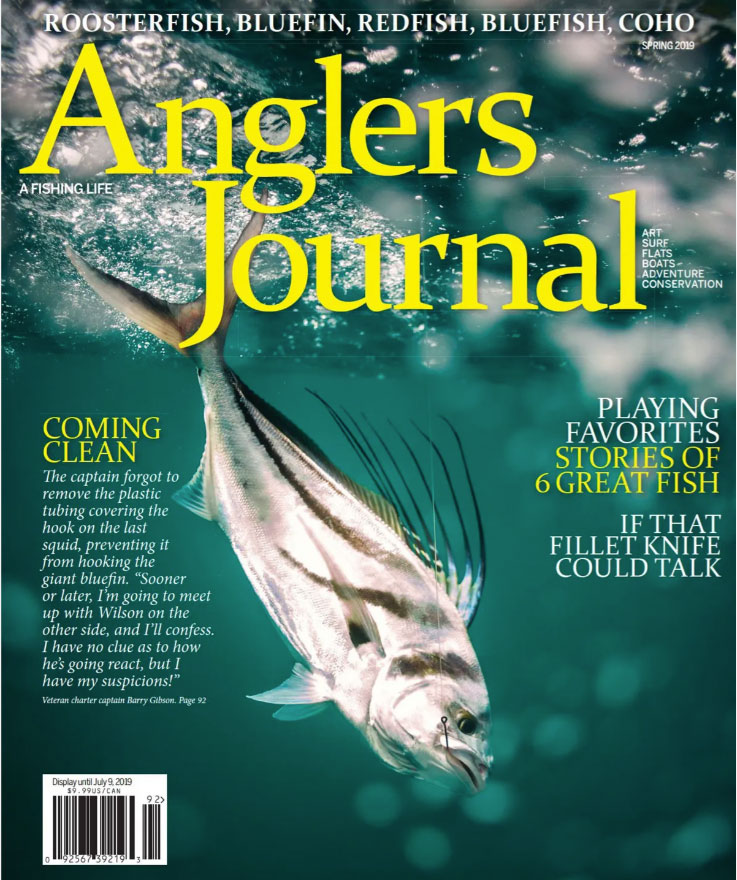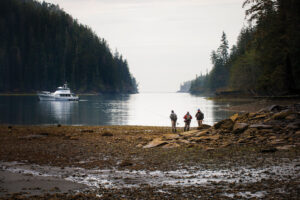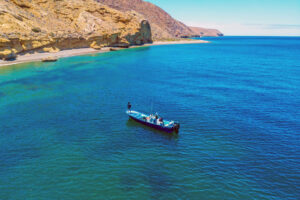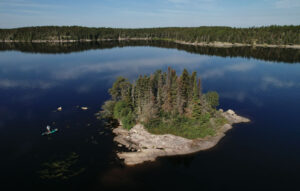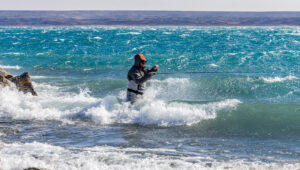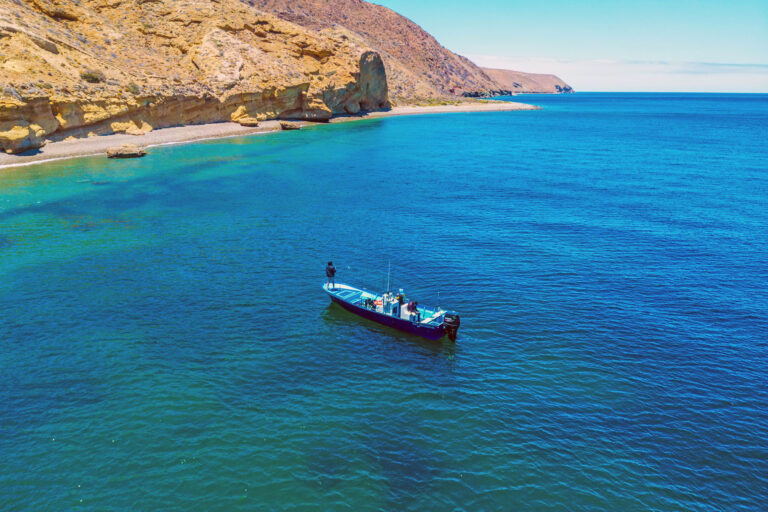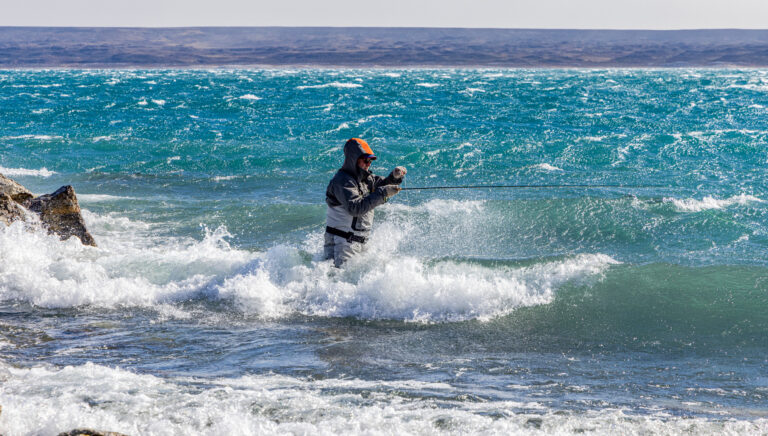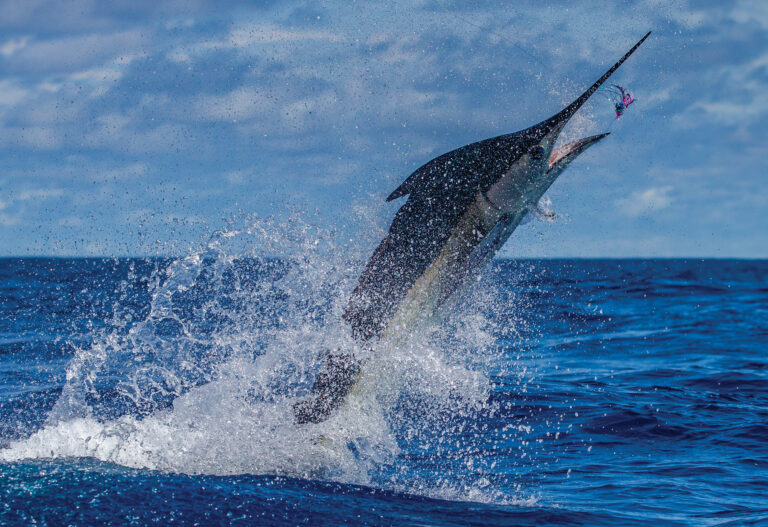Dan Laffin and I got together for the first time on a Tuesday afternoon at a restaurant in Middletown, Connecticut. Going into the place, a Mexican establishment called La Boca, I cut a Florida boy’s appreciative glance at the trees outside on Main Street, resplendent in the sunshine and all decked out in autumn colors. It took awhile for my eyes to adjust once we hit the dining area inside — it was dim and dusky in there. But we found a table not far from the bar, and as I recall, both of us ordered the same dish, although for the life of me I can’t remember what it was. Of course, the first subject we really bore down on was the fly-fishing trip we were going to take the next day.
 DAN LAFFIN 2006 IN KHOST-GARDEZ PASS, AFGHANISTAN
DAN LAFFIN 2006 IN KHOST-GARDEZ PASS, AFGHANISTAN“This time of year, there’s not much sense getting started until around noon,” Dan explained as we sat down and began sizing each other up, the way guys do when they’ve never met before. “Because of the colder temperatures, things don’t really get going until the sun’s pretty high — then, as you start having the highest temperatures of the day, the fish become active and so do the insects.”
Stocky and of medium height, Dan was dressed in a casual way. He had a quiet assurance about him, with boyish good looks, an excellent set of laugh wrinkles, a wide, friendly smile and a look that occasionally ran deep and somber. I had no trouble seeing him as the staff sergeant he’d been in 2006, in an infantry company, in Paktia Province, Afghanistan. And I had no trouble seeing him later, stateside, struggling with the aftereffects of combat — a lonely business at best, at least in light of my own experience.
The two of us were a lot alike, despite the difference in our ages. I’d achieved more or less the same rank in an infantry unit back in 1969, in Quang Tri Province, Vietnam. And I’d also had my fair share of combat-related adjustment issues once I’d made it back to the good ol’ U.S.A. in one piece, an aspect of my biography I seldom got to talk about with other guys who’d been there, done that, and who truly understood.
“There’s a very dark place you can get to,” I observed toward the end of our meal.
“Yeah,” Dan replied, “I know.”
On The Fly-fishing Trail
Wednesday was a spectacular day. In keeping with a game plan we’d agreed upon the afternoon before, photographer Mike Cevoli and I were driving up to northwestern Connecticut to rendezvous with Dan at a fly shop called Housatonic River Outfitters. Once there, we’d all take a good look around the shop, buy a few flies, shoot some photos, maybe pick up some sandwiches at a likely little deli across the road and then head out to fish a few stretches of the Housatonic River, one north of the old West Cornwall covered bridge and two more to the south. With any luck, the river’s native brown trout and its rainbows, or both, would cooperate.
 West Cornwall covered bridge is an iconic New England landmark
West Cornwall covered bridge is an iconic New England landmark“Man, this is pretty country up here,” Mike said, sipping coffee and looking out the window at a big, red-fringed marshland with cattails sticking up. “Not too warm. Clear. Just a few clouds. Light’s perfect. Great day for photography.”
The point of the trip was only parenthetically recreational. The main purpose was to work up a magazine story about the therapeutic properties of fly-fishing. Based on experiences both Dan and I had had over the years, each of us was convinced that fly-fishing could serve as a very useful tool for dealing with combat-related issues such as post-traumatic stress disorder and traumatic brain injury. In fact, Dan had already affiliated himself with Rivers of Recovery, a national program that puts together guided fly-fishing trips for young combat veterans with physical and/or psychological injuries.
“You’re right, Mike,” I said, glancing out a window as we sped along the edge of a sweet little stream with a sign that read “Furnace Brook,” and past more signs designating the environs as a WTMA, or Wild Trout Management Area. “It is pretty country.”
Bad News at the Fly Shop
As soon as Mike and I step through the front door of Housatonic River Outfitters, I feel the old ticker skip a beat. As luck would have it, we are a half-hour or so early for our meeting with Dan, and what an establishment to dawdle in.
In the main room there are fly rods from a variety of high-end manufacturers, hundreds of spools of fly line, thousands of spools of tippet material, a vast cabinet containing jewel-like fly reels, a table sagging under a selection of both esoteric and mainstream fly-fishing videos, clothing on hangers, waders on hooks, whopping big fish mounted on big plaques near the ceiling and, right in the middle of it all, a counter with a cheery-looking, red-faced, white-goateed gent standing behind it.
“How ya doin’?” I ask, giving the fellow a grin before ducking, involuntarily and voraciously, into an intriguing side room circumscribed with book shelves and a wall of fly-tying materials. From there, as if drawn by a giant electromagnet controlled by the fly-fishing gods, I move into a sitting room of sorts, with a woodstove popping and crackling away in a corner, more books (seemingly, the shop contains every book ever published on fly-fishing), a well-worn sofa with an overstuffed chair alongside and a couple of display cases loaded with antique fly-fishing tackle and other equipment.
While Mike takes pictures, I settle into the sofa for a few moments so I can briefly imagine what it might be like, sitting here on a rainy, wintry afternoon, say, with a few other kindred souls, swapping stories and absorbing the stove’s warmth. Or just sitting here all by myself maybe, with embers glowing in the stove, reading a little Roderick Haig-Brown or Sparse Grey Hackle or even the original trout bum himself, Sir Izaak Walton. Eventually, of course, Mike and I are constrained to abandon our separate activities, return to the main room and introduce ourselves to the gent at the counter.
“Tom Delekta, of the Torrington Delektas, at your service,” the old boy responds, finishing off the formalities with a flourish. Then he tosses out a revelation I really don’t know how to take. “Just got out of prison, boys,” he goes on, affecting a desperate scowl, “but I’m trying to go straight now. Trying to go straight, boys. I mean it. I’m really trying. Mom and Dad wanted a lawyer but hey! Here I am, workin’ in a fly shop!”
It is a joke, of course, and Dan comes into the shop while Mike and I are still laughing. With ongoing satisfaction, Tom soon leads the three of us to a pleasingly vast array at the rear of the store, where Dan and I begin selecting, with Tom’s help, a straightforward combo of blue-winged olive and isonychia flies. Tom predicts, as we scrutinize each prospective purchase carefully, that a blue-winged olive hatch will start around noon and last perhaps a couple of hours.
“Gonna get cold and windy later,” he concludes before excusing himself to take care of a couple of customers who’ve just walked in up front. Mike follows, ever on the lookout for fresh imagery.
“Bill,” says Dan, once we are by ourselves, “some stuff happened last night — one of my good friends here in Connecticut, a guy who was in my unit in Afghanistan, a really good guy — he died. Suicide would be my guess.”
He gives me that deep and somber look. I shake my head.
“This is just magazines, you know,” I say. “We can cancel this thing, go fishing another time.”
“No,” he replies. “It’ll be good — it’ll be good to be out on the river today.”
Satori on the Naugatuck
It’s funny how close you can get to another person in a short time, especially if that person happens to have had a very similar, life-changing experience at some point along the way. During our lunch at La Boca on Tuesday afternoon, Dan and I had more or less swapped biographies, achieving a pretty raw level of identification, one with the other.
His homecoming odyssey had begun Nov. 2, 2006, with a bunch of rocket-propelled grenades slamming into both sides of the Humvee he was riding in, more or less simultaneously. Unconsciousness came next, followed by an in-and-out awareness of firefight dramatics, medics and a high-speed ride in some sort of vehicle. The blasts were so intense they’d shattered his teeth in their sockets. Extensive surgery was required to repair the left side of his body — his shoulder, his arm, his wrist, his knee and parts of his face. He spent time in a hospital in Germany. Then he came home.
My homecoming odyssey had begun Sept. 28, 1969, with an ambush planned and executed with absolute brutality by North Vietnamese regular soldiers. The ambush had turned into a daylong battle, an insanity that was also fraught with wildly streaking rocket-propelled grenades. By evening, the infantry company I’d served with for months had been decimated. The leg wound I received that day was not serious, but the psychological damage I sustained then and during subsequent battles and firefights was major, although it would take many years and many hardships to fully understand this.
 Veterans Laffin (left) and Bill Pike spent a day on the river in search of serenity and native browns.
Veterans Laffin (left) and Bill Pike spent a day on the river in search of serenity and native browns.Dan turned to fly-fishing as a way to handle the darkness he’d brought home with him. Not long after returning to Connecticut, during a trip to the Naugatuck River for Atlantic salmon with his father and a few friends, he’d discovered that the calm, the concentration and the discipline the sport demands constituted a kind of therapy, a sort of mental release. “The first thing I realized was that when I was focused on fishing it was simply impossible to think about the physical pain I was in,” he explained. “And then later on, as I continued to have trouble with PTSD, I again found that fly-fishing helped a great deal — when I was doing it there was no room in my brain for anything else.”
I knew exactly what he meant. For some years, I’d also used fly-fishing to deal with a darkness that still occasionally came, to supplant a melee of ancient, horrific visions with bursts of bright life lived in the moment, occasional feasts of sensual delight and spaces of peace I’ve never been able to access in any other way.
“We’re fortunate, you know,” I told Dan on the street outside La Boca after we’d finished our lunch in Middletown. “To be alive when so many other guys aren’t. And to know what we know.”
“You’re gettin’ pretty deep there, Bill,” he replied, with a grin. “But I agree with you, totally.”
Rivers of Recovery
One of the therapies Dan underwent after his return required that he keep a journal, and for reasons he still can’t explain, he posted one of his entries, about fly-fishing and its effects on PTSD, on the Internet. The posting brought two influential people into his life.
The first was an ESPN outdoor writer named Don Barone, who contacted Dan, accompanied him on a fly-fishing trip to Connecticut’s Farmington River and, when all was said and done, put together an online story that nicely captured the spirit of Dan’s thinking. The second person read Barone’s story, called Dan and made him an offer he couldn’t refuse.
“How about coming out to Utah to fish the Green River for a couple of days,” suggested Dan T. Cook, founder and executive director of Rivers of Recovery, the aforementioned enterprise dedicated to using guided fly-fishing trips to help veterans with PTSD and TBI (riversofrecovery.org). “You’ll be fishing with some other veterans like yourself — just a couple of them. Maybe your dad can come along.”
Rivers of Recovery was a fairly new program at the time. Cook had started it in 2008 after leaving a career on Wall Street to go trekking around the globe with a fly rod. The experiences that resulted ultimately convinced him that fishing and related outdoor activities could be used to reduce dependency on anti-anxiety medication and painkillers and simultaneously help young veterans who are challenged with the nightmares, insomnia, flashbacks, depression, anxiety, suicidal thoughts and behaviors, social dysfunction and stress that characterize PTSD.
Dan’s trip to Utah went very well, and a longer one to Argentina followed. He became an advocate for Rivers of Recovery in Connecticut, as well as other parts of New England, speaking at events and doing fund-raisers. With the help of friends, he’d even started to rough out plans for an offshoot program that would make fly-fishing trips available to New England combat veterans in New England, obviating the long distances typically involved in Rivers of Recovery trips out West and elsewhere. He ran into such guys all the time, it seemed, through his job with the Connecticut Department of Labor, finding work for veterans.
A Fine Blue-Winged Olive Hatch
How lovely to be standing hip-deep in the Housatonic, not far north of the West Cornwall covered bridge, sideways to the current, with a 9-foot, Sage 5-weight fly rod trapped under my arm like a rifle. I can smell wood smoke in the crisp air, and the faint scent of leaves, damp and fallen. The push of the cold water against my legs is enlivening, encouraging me to push back, if ever so slightly.
Dan is in the river, too, just a ways upstream. I watch as he expertly launches a forward cast out toward some flat water well beyond the big riffle we are wading in. As the neon glow of the line unwinds from a very tight loop formed by the back cast, I experience a faint but significant uplift. Done well, fly-casting is an art form, a lovely thing to watch, the absolute opposite of death and destruction.
I clip the tag end off the clinch knot I’ve used to secure my pretty, artistically tied fly, a blue-winged olive, to a hair-like 5X tippet emanating from a furled leader I’d brought up from Florida.
I toss the fly, leader and line into the current and take rod in hand. My very first back cast snags in some alders behind me, but the fly comes loose easily enough. I move a little farther from shore and make a fairly accurate cast to a patch of promising pocket water on the downstream side of a big, ledge-like slab. It looks like a really fishy spot. Charmingly enough, a little maple leaf, turned scarlet by the season, floats like candy on top. I figure it might prove providential.

Only seconds pass when I notice it: The blue-winged olive hatch is beginning — there are bugs flying around over the water, here and there. Circles appear out on the flat beyond the riffle. They are manifesting with increasing frequency. Fish, I tell myself. Trout!
“Hey, Bill,” says Dan, raising his voice and pointing. “I’m seein’ backs and dorsal fins out there — they’re feeding just under the surface. Try draggin’ your fly under just a little. They may be hitting on emergers.”
Somewhat astonished to be feeling what we used to call “Buck Fever” in the Adirondack Mountains of my youth, I abruptly snatch my little blue-winged olive fly out of the promising pocket water, feeling a faint bump as I do so. “Shoot,” I mumble, willing my overly hurried back cast to play out properly — I’ve probably missed a good fish in that darn pocket, but to heck with it. After a slow and steady retrieve, as my fly speeds toward me on an eddy and disappears into a seam, I wait with mounting excitement. Nothing.
I shoot a fast glance upstream. Dan is pulling in a nice little fish. I wade up there to take a look. So does Mike. Click, click, click goes Mike’s camera, as he zooms in on the little native brown, a jewel-like creature that departs quite sportily when Dan releases him.
“Beautiful,” I remark, “just beautiful.”
The grin Dan gives us is boyish, real. Darkness be damned.
And So, Goodbye
We fish in three places on the Housatonic. The last one is well below the bridge at a spot called “Push’em-Up,” for what reason Dan isn’t sure. Push’em-Up consists of a broad, deep pool below a run with some pocket water on the side. The hills all around are aglow with the colors of white pine, maple, birch and beech. Again, there is the aroma of wood smoke.
Dan’s casting never falters as the afternoon wears on — he maintains his accuracy and delicacy with unflagging energy. I have to hand it to him — the guy is good. Really good. But then, too, these are his home waters. He’d first fished Push’em-Up, he says, when he was 9 years old. With his dad.
The casting I’m doing is getting a little iffy now — its loveliness is starting to fade, along with the energy boost I’d gotten from the sandwiches we wolfed down at lunch. Moreover, my feet are getting cold and so are my hands. Florida boy, I tell myself at one point — rationalizing, I suppose.
“New to fly-fishing?” a crusty old geezer queries from a spot 50 yards or so downstream as I struggle to thread 5X tippet through the eye of a very small isonychia fly in the fading light with stiff, faintly arthritic fingers. The comment reminds me that, though I’m standing in the midst of paradise at the moment, even Eden seems to hand you a few rotten apples now and again.
Dan and I call it quits toward afternoon’s end and slog up to our cars, with Mike following along, click, click, clicking. As we all peel off our waders, boots and other paraphernalia and share our versions of the day’s adventures, a ritual I always enjoy, I am a little surprised to find myself mulling over an odd question. How should I say goodbye to Dan — in a way that will clearly convey to him that I understand about his friend’s death the night before, that I honor the loss of yet another fallen comrade?
I think about it — old soldiers I know, but the younger ones? Should I go with a solid handshake, perhaps the most sensible route, given the bearing and manner Dan seems to so assiduously maintain? Or should I go with an arm around the shoulder? Would that be OK?
“So, Bill,” he says, after we finish stowing our gear, “I guess it’s so long for now.”
“Yup,” I reply with a grin, still wondering how to proceed.
“We should do this again soon,” he continues. “Even if there’s snow on the ground.”
I am just about to respond when he steps forward and puts both arms around me — a heartfelt bear hug. I hug back.
“That’s a promise, Dan. That’s a promise.”

